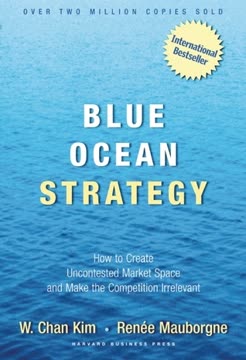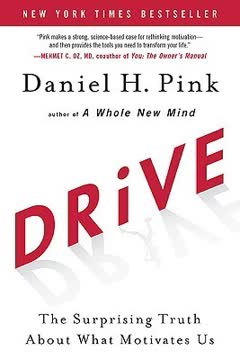Key Takeaways
1. The Third Way: A Low-Risk, High-Reward Innovation Approach
Little ideas can produce big results.
Binary thinking limits innovation. Many companies believe they must choose between incremental improvements or radical disruption. The Third Way offers a middle ground, focusing on developing complementary innovations around a core product. This approach can deliver explosive growth without the high cost and risk of radical disruption.
Success stories abound. Companies like Gatorade, Novo Nordisk, and CarMax have successfully used the Third Way to overcome competitive disadvantages and revitalize their businesses. By surrounding their core products with innovative complements, they've created unique value propositions that are difficult for competitors to replicate.
Key characteristics of the Third Way:
- Multiple, diverse innovations around a central product
- Innovations work together to fulfill a compelling promise
- Close management of the innovation portfolio
2. Complementary Innovations: Enhancing Core Products Without Radical Changes
Surrounding their core products with innovative complements, they've created unique value propositions that are difficult for competitors to replicate.
Focus on the ecosystem, not just the product. The Third Way shifts attention from improving the core product to enhancing the entire customer experience. This approach allows companies to extract more value from existing products without the risks associated with radical changes.
Diverse innovations create synergy. Complementary innovations can span various categories:
- Business model innovations (e.g., new revenue models, pricing schemes)
- Product or service innovations
- Customer experience innovations
- Process innovations
By developing a portfolio of interconnected innovations, companies can create a system that's greater than the sum of its parts, providing a sustainable competitive advantage.
3. The Power of a Compelling Promise to Customers
A promise is a commitment that you make to your key customer: "If you buy our product, it will …"
Articulate a clear value proposition. A strong promise addresses a compelling customer need in a simple, differentiating way. It guides the selection of complementary innovations and aligns the entire organization around a common goal.
Characteristics of an effective promise:
- Based on deep customer insights
- Differentiates the company from competitors
- Builds on unique company strengths
- Excites and energizes the team
- Remains stable over time
The promise acts as a filter for innovation ideas, ensuring that all efforts contribute to a coherent customer solution. For example, CarMax promised a hassle-free, trustworthy car-buying experience, which guided all aspects of their business model and customer interactions.
4. Four Critical Decisions in Third Way Innovation
The Third Way calls for a higher-level role, a solution integrator.
Navigate the innovation process. Successful implementation of the Third Way requires making four key decisions:
- Choose the key product
- Define the business promise
- Select complementary innovations
- Determine how to deliver the innovations
Redefine leadership roles. Traditional product management roles are often insufficient for Third Way projects. Companies need to create a new position: the solution integrator. This leader has the authority and responsibility to coordinate efforts across the organization and with external partners.
Key responsibilities of the solution integrator:
- Lead a cross-functional team
- Manage the entire innovation portfolio
- Ensure alignment with the business promise
- Coordinate internal and external resources
5. Mapping the Customer Context: Follow the Customer, Money, and Product
To understand tigers, go to the jungle, not the zoo.
Gain deep customer insights. Understanding the full context in which customers interact with your product is crucial for identifying compelling promises and effective complementary innovations. This requires going beyond traditional market research methods.
Three key perspectives to explore:
- Follow the customer: Map the entire customer journey and experience
- Follow the money: Identify all points where financial transactions occur
- Follow the product: Analyze your company's value chain and touchpoints
Best practices for customer research:
- Adopt a "dating, not fighting" mindset
- Observe customers in their natural environment
- Learn from extreme users and non-users
- Practice "vuja de" - seeing familiar situations with fresh eyes
By combining these perspectives, companies can uncover unmet needs and opportunities for innovation that may not be apparent through traditional product-focused analysis.
6. Experimentation and Prototyping: Keys to Successful Innovation
The best predictor of innovation success, it turned out, was to ask a few consumers if they would buy the proposed product.
Embrace uncertainty and learning. Successful Third Way innovation requires moving beyond reliance on expert opinions or market projections. Instead, companies should focus on rapid experimentation and customer feedback to guide decision-making.
Leverage pretotypes and prototypes:
- Pretotypes: Quick, cheap simulations to test concepts early
- Prototypes: More refined versions for detailed testing
Types of innovation tests:
- Wizard of Oz: Simulate automated functions manually
- Fake door: Gauge interest in non-existent products
- One-night stand: Limited real-world product trials
The goal is to gather real-world data on customer behavior and willingness to buy, rather than relying on hypothetical scenarios or expert predictions. This approach reduces risk and increases the likelihood of successful innovation.
7. Leadership and Organizational Challenges in Third Way Innovation
The Third Way is likely to change any organization pursuing it because far more people will be involved in the act of innovation—not just supporting the innovators but being real product-related innovators themselves.
Cultural and structural shifts. Implementing the Third Way often requires significant changes in how organizations approach innovation. This can create challenges as teams adapt to new roles and processes.
Key organizational challenges:
- Breaking down silos between departments
- Redefining success metrics and incentives
- Developing new skills across the organization
- Managing relationships with external partners
Leadership imperatives:
- Set clear expectations for the solution integrator role
- Provide resources and authority for cross-functional collaboration
- Encourage experimentation and learning from failure
- Balance short-term results with long-term innovation goals
Leaders must create an environment that supports the unique requirements of Third Way innovation, fostering collaboration and a willingness to explore new approaches.
8. Learning from Success and Failure: Case Studies in Third Way Innovation
A key consequence of the Third Way is that it forces the product manager out of his or her traditional role.
Real-world examples provide valuable lessons. The book offers numerous case studies of companies that have successfully implemented the Third Way, as well as those that have struggled. These stories offer insights into both the potential and pitfalls of this approach.
Success stories:
- LEGO: Revitalized its core product with complementary storytelling and digital experiences
- Apple: Built a ecosystem of hardware, software, and services around the Mac
- Disney: Created a synergistic empire of films, theme parks, and merchandise
Cautionary tales:
- Sony's action camera: Focused on product features instead of the broader customer experience
- Frederick's of Hollywood vs. Victoria's Secret: Divergent promises led to vastly different outcomes
These case studies demonstrate the importance of maintaining a strong core product, developing a compelling promise, and creating a cohesive system of complementary innovations. They also highlight the need for ongoing adaptation and reinvention to sustain success in the long term.
Last updated:
FAQ
What is The Power of Little Ideas by David C. Robertson about?
- Third Way innovation approach: The book introduces a "Third Way" to innovation, focusing on creating multiple complementary innovations around a key product rather than pursuing radical or incremental innovation alone.
- Low-risk, high-reward strategy: It advocates for a system of innovations that enhance existing products, offering sustainable growth without the high risks of disruptive innovation.
- Case studies and practical examples: Robertson uses real-world examples from companies like LEGO, Apple, Gatorade, and Disney to illustrate how this approach works in practice.
Why should I read The Power of Little Ideas by David C. Robertson?
- Fills an innovation gap: The book addresses a common gap in innovation literature by providing a practical framework for innovating in existing markets with existing products.
- Actionable and low-risk: It offers a clear, actionable process for achieving significant growth and competitive advantage without the high failure rates of radical innovation.
- Leadership and management insights: The book provides guidance on overcoming organizational challenges and managing innovation portfolios, making it valuable for managers and business leaders.
What are the key takeaways from The Power of Little Ideas by David C. Robertson?
- Four-decision framework: The book outlines four critical decisions—choosing a key product, defining a business promise, selecting complementary innovations, and delivering those innovations.
- Customer-centric innovation: Emphasizes deeply understanding customer needs and contexts to uncover unmet needs and guide innovation.
- Organizational alignment: Stresses the importance of cross-functional collaboration and new management roles to coordinate and deliver complementary innovations effectively.
What is the "Third Way" innovation approach described in The Power of Little Ideas by David C. Robertson?
- Definition and focus: The Third Way is about creating a system of diverse, complementary innovations around a stable, key product to fulfill a compelling customer promise.
- Distinct from other methods: Unlike disruptive or blue ocean strategies, it focuses on existing products and markets, reducing risk and internal disruption.
- Systematic and managed: Innovations are centrally managed and designed to work together, making the core product more attractive and valuable.
How does the "Third Way" in The Power of Little Ideas differ from disruptive innovation or blue ocean strategy?
- Existing products and markets: The Third Way innovates around established products in current markets, rather than creating new markets or technologies.
- Lower risk, high reward: It avoids the high failure rates and costs of radical innovation while still delivering significant value.
- Complementary, not competitive: The approach can be used alongside other innovation strategies, serving as a foundation for future disruptive moves.
What are the four key decisions in the Third Way innovation process in The Power of Little Ideas by David C. Robertson?
- Decision 1: Key product selection: Identify a stable, strategically important product central to your business and customer relationships.
- Decision 2: Business promise definition: Develop a clear, compelling promise that the product and its complements will deliver to customers.
- Decision 3: Complementary innovation selection: Generate and filter a portfolio of complementary innovations that fulfill the business promise.
- Decision 4: Delivery and management: Assign leadership to a solution integrator, coordinate cross-functional teams, and ensure effective delivery of innovations.
How does The Power of Little Ideas by David C. Robertson define and use the concept of a "business promise"?
- Clear customer commitment: A business promise is a specific, compelling statement of the value the key product and its complements will deliver to customers.
- Guides innovation efforts: It acts as the glue aligning all complementary innovations, ensuring they work together to fulfill a specific customer need.
- Differentiation and focus: A strong promise differentiates the product from competitors and focuses innovation on what matters most to customers.
What methods does The Power of Little Ideas by David C. Robertson recommend for understanding customer needs and contexts?
- Follow the customer: Map the customer activity chain to identify pain points and unmet needs throughout the product experience.
- Follow the money: Analyze the consumption chain to see where value is recognized and where innovation opportunities exist beyond the product itself.
- Follow the product: Examine your company’s value chain to find areas where complementary innovations can improve the customer experience.
How does The Power of Little Ideas by David C. Robertson suggest generating and selecting complementary innovations?
- Idea generation techniques: Use customer insights, brainstorming, innovation tournaments, and external partners to generate a wide range of complementary innovations.
- Filtering process: Apply four filters—constrain, connect, control, and complete—to select innovations that best deliver the business promise.
- Experimentation and validation: Use pretotyping and early market tests to validate ideas before full development, reducing risk and improving selection accuracy.
What is the role of the "solution integrator" in delivering innovations according to The Power of Little Ideas by David C. Robertson?
- Expanded leadership role: The solution integrator manages the entire portfolio of complementary innovations, both inside and outside the company.
- Cross-functional coordination: This leader assembles and leads cross-organizational teams, manages partnerships, and ensures alignment with the business promise.
- Discipline and risk management: The solution integrator imposes discipline on innovation processes, manages risk, and communicates progress using tools like the innovation matrix.
What is the innovation matrix and how is it used in The Power of Little Ideas by David C. Robertson?
- Project management tool: The innovation matrix maps all complementary innovations by business category and risk level on a single page.
- Communication and coordination: It helps the solution integrator communicate the scope and complexity of the innovation project to the organization.
- Risk and resource assessment: The matrix allows teams to assess where to focus management attention, resources, and identify skill gaps or partnership needs.
What are some real-world examples of companies successfully using the Third Way approach from The Power of Little Ideas by David C. Robertson?
- LEGO: Revitalized its brand by building complementary innovations like Bionicle, TV shows, and video games around its core product, LEGO bricks.
- Gatorade: Focused on serious athletes and added nutrition products and services around its core sports drink, boosting sales without changing the drink itself.
- Disney and GoPro: Disney built an ecosystem around animated films with theme parks and merchandise, while GoPro created an integrated system of products, accessories, and software to support adventure video creation and sharing.
Review Summary
The Power of Little Ideas presents a "third way" innovation strategy focused on creating complementary products around a core offering. Many reviewers found the concept insightful, with useful case studies and examples. Some felt the book could have been shorter, with redundant content towards the end. Readers appreciated the practical approach to innovation that balances between incremental improvements and disruptive changes. The book received mixed reviews, with ratings ranging from 1 to 5 stars, but was generally well-received for its unique perspective on business innovation.
Similar Books










Download PDF
Download EPUB
.epub digital book format is ideal for reading ebooks on phones, tablets, and e-readers.





